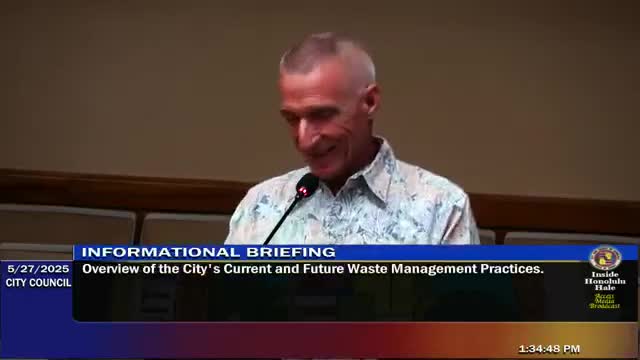Honolulu advances ash recovery project to increase landfill diversion rates
May 28, 2025 | Honolulu City, Honolulu County, Hawaii
Thanks to Scribe from Workplace AI , all articles about Hawaii are free for you to enjoy throughout 2025!

This article was created by AI using a video recording of the meeting. It summarizes the key points discussed, but for full details and context, please refer to the video of the full meeting. Link to Full Meeting
The EMRF will enable the separation and processing of bottom ash and fly ash, which are byproducts of waste incineration. Currently, all ash is sent to the Waimanalo Gulch Landfill, but with the new facility, the city anticipates a substantial increase in waste diversion rates—from 18% to over 90%. This shift is expected to significantly reduce the volume of waste sent to landfills, extending the lifespan of the landfill by up to 50 years.

Before you scroll further...
Get access to the words and decisions of your elected officials for free!
Subscribe for FreeThe facility will not only improve recycling rates but also recover valuable metals from the ash, including ferrous and non-ferrous materials. The process involves grinding and screening the ash to create aggregate materials that can be used in asphalt and concrete, thus providing a sustainable alternative to traditional materials.
Council members expressed enthusiasm for the project, recognizing its potential to address both environmental concerns and the city's growing waste management challenges. The EMRF is currently in the design and permitting phase, with plans to integrate advanced technologies to ensure efficient processing and minimal environmental impact.
In addition to the EMRF, discussions included the incorporation of recycled glass into pavement materials, highlighting the council's commitment to exploring innovative solutions for sustainable infrastructure. However, concerns were raised regarding the complexities of recycling these materials once integrated into pavement.
As Honolulu moves forward with these initiatives, the city aims to set a precedent for sustainable waste management practices, ultimately benefiting the community and the environment. The council's proactive approach reflects a growing recognition of the importance of sustainability in urban planning and public health.
Converted from 2025-05-27 Housing Sustainability Economy & Health meeting on May 28, 2025
Link to Full Meeting
Comments
View full meeting
This article is based on a recent meeting—watch the full video and explore the complete transcript for deeper insights into the discussion.
View full meeting




